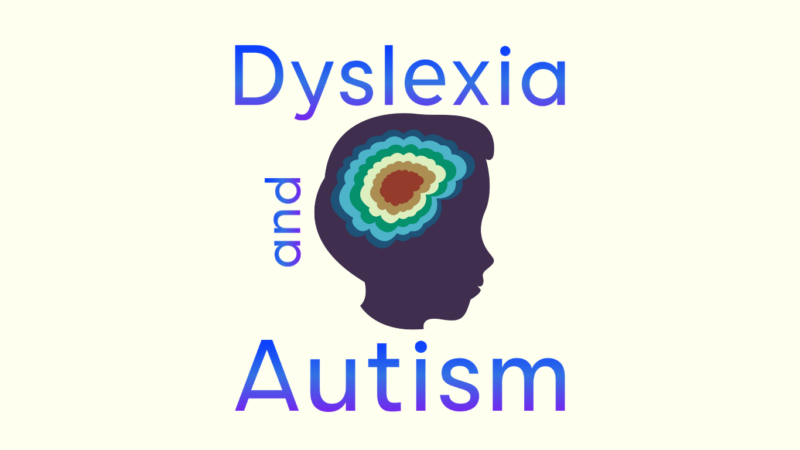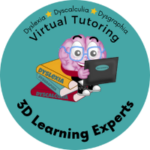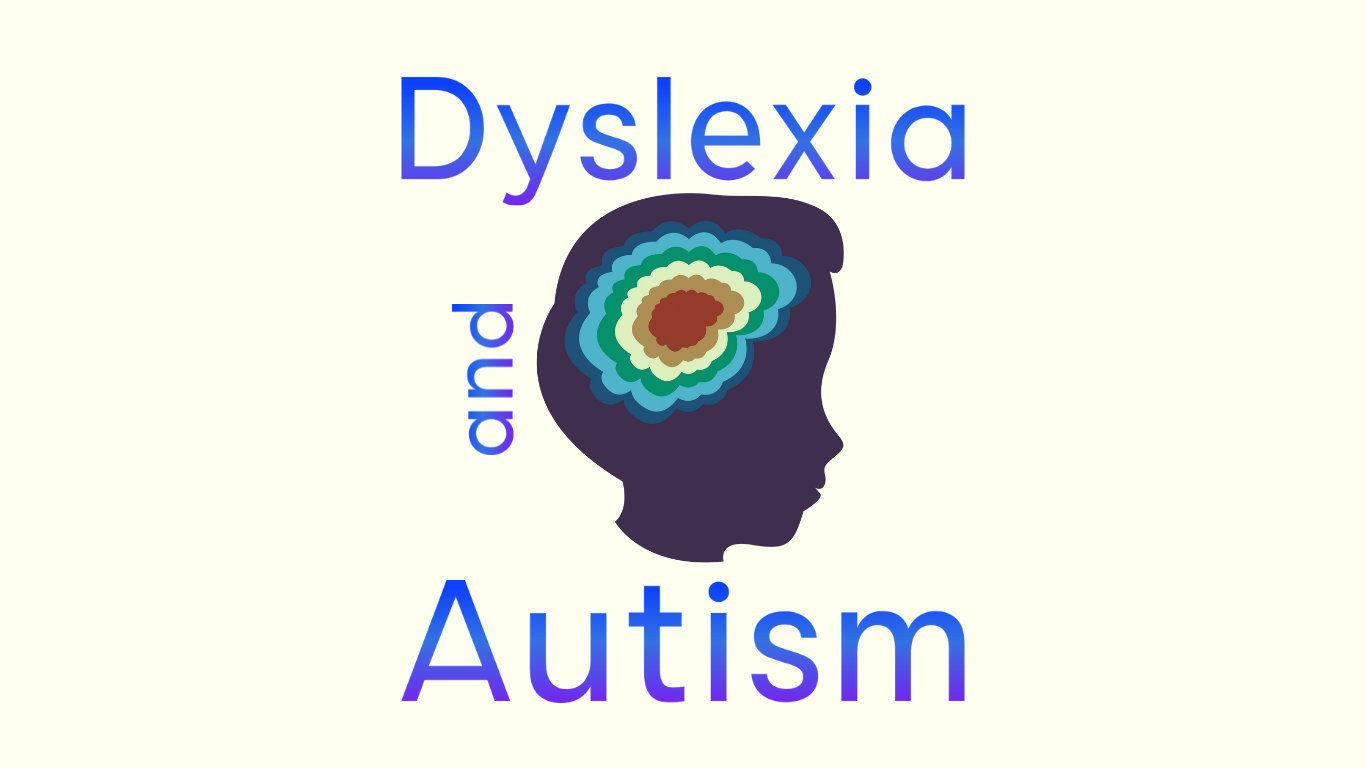Understanding the Shared Challenges Between Dyslexia and Autism
Dyslexia disrupts the ability to read, spell, and process language. Imagine trying to read when your brain struggles to process the order and sound of letters, making words feel like a jumbled puzzle. This is what it can be like for someone with Dyslexia. Autism can make it difficult to communicate with people, understand what they mean, and handle external disruptors like loud noises or bright lights. For example, when my youngest son was a baby, he cried nonstop when he was in a crowded room with lots of noise—he became very overwhelmed. When he was older and we played music while traveling in the car, he would call out from the third row, “No loud noises!”
If a child has both Dyslexia and Autism, they might find it hard to read and also struggle to make friends. Imagine a child who has difficulty reading in school and also doesn’t understand how to play with others on the playground. They might feel very alone and frustrated.
They may also experience sensory overload in the classroom, making it even harder to focus on reading or following instructions. Bright lights, the hum of fluorescent bulbs, or the chatter of classmates can become overwhelming, causing stress and distraction. If a teacher calls on them to read aloud, they might freeze, not only because reading is challenging but also because they feel anxious about social interactions. These combined struggles can make school a frustrating and exhausting place, where they constantly feel behind or misunderstood. However, with the right support, such as a quiet learning space, multisensory reading instruction, and social skills guidance, these children can build confidence and thrive.
Why This Video is a Must-Watch
Want to learn more about the struggles and solutions for children with Dyslexia and Autism?
Watch this video now: Exploring the Link Between Dyslexia and Autism.

The Connection Between Dyslexia and Autism: More Similar Than You Think
Dyslexia and Autism may seem like separate challenges, but they share many similarities that can make learning and socializing difficult. Both conditions affect processing—Dyslexia impacts how the brain deciphers language, while Autism can make it challenging to interpret social cues and sensory input. Many children with either condition struggle with executive functioning skills, such as organizing thoughts, following multi-step instructions, or managing time effectively. Additionally, both Dyslexia and Autism can lead to heightened anxiety, particularly in school settings where reading aloud, making friends, or adapting to new routines can feel overwhelming. Understanding these overlapping difficulties allows for better-targeted support, ensuring that children receive the right interventions to help them build confidence and thrive.
Early Intervention: The Key to Success
Students with Dyslexia and Autism often face difficulties in school and social situations. This is why early intervention is crucial. Because Dyslexia makes reading and spelling difficult, a child with Dyslexia might experience a delay in learning how to read or sound out words. Autism can make it difficult for a student to express their feelings with their teacher or other adults. Additionally, a child with Autism might struggle with understanding jokes and sarcasm.
With the right support, children with Dyslexia and Autism can develop the skills they need to succeed academically and socially. Early intervention, such as specialized reading instruction and personalized learning strategies, can help a child with Dyslexia build confidence in reading and spelling. At the same time, structured social skills training can support children with Autism in understanding communication cues and forming friendships. At 3D Learning Experts, we provide expert guidance and individualized instruction to help students thrive. By addressing challenges early, we empower children to reach their full potential and navigate both the classroom and social settings with greater ease.
Dyslexia vs. Autism: Key Differences You Need to Know
While Dyslexia and Autism share some similarities, they also have key differences in how they affect learning and daily life. Dyslexia primarily impacts language processing, making reading, spelling, and writing difficult, even though intelligence is unaffected. A child with Dyslexia might struggle to sound out words, mix up letter order, or have trouble remembering how words look. In contrast, Autism is a neurodevelopmental condition that affects social communication, sensory processing, and behavior. A child with Autism might find it hard to understand facial expressions, body language, or unspoken social rules, which can make interactions with peers challenging.
Another major difference is how they affect sensory experiences. While some children with Dyslexia may have mild sensory challenges, children with Autism often experience heightened or reduced sensitivity to sights, sounds, textures, and other stimuli. For example, a child with Autism might feel overwhelmed in a noisy classroom or struggle with the feeling of certain fabrics, while a child with Dyslexia may primarily struggle with decoding written words. Recognizing these differences is essential in providing the right support, ensuring each child gets the tools they need to succeed.
Take the First Step Toward Helping Your Child
Understanding Dyslexia and Autism is the first step toward making a difference. If you’re looking for expert guidance and personalized support, 3D Learning Experts is here to help. Don’t let your child struggle alone—get the right resources today. Watch our video for more insights:

